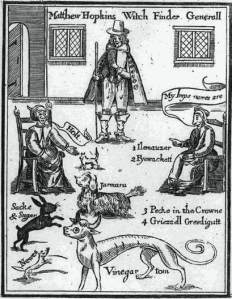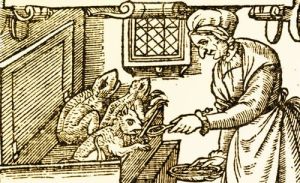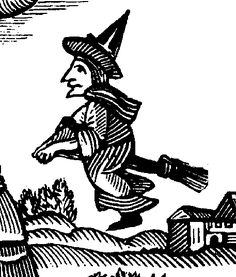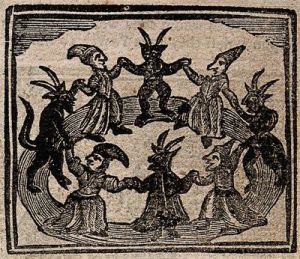“Thou shalt not suffer a witch to live” was a scripture passage the Puritans and many Europeans took seriously. There could be no doubt that witches, sorcerers or enchantresses were an abomination to God. The presence of a witch or wizard was a serious matter for most people in the last several thousand years.

Witches were everywhere and found in every century and country. Folk magic was the common type of sorcery in the early Christian period in Europe and demons and devils were not typically involved. Magic involving spells and potions were a common practice amongst many groups and considered superior to the old pagan practices when mixed in with some Christian beliefs such as divine relics and the supernatural influence of saints.
In Medieval times, witchcraft was understood as a collection of beliefs and practices used for healing and forecasting the future. Many of the practitioners of witchcraft were regarded as valuable members of the community considering the absence of modern medicine. Practitioners throughout Europe hid in the shadows and handed down their expertise to successive generations.

It was the large-scale persecution and execution of those believed to be in allegiance with the Devil that makes the 14th to 17th century unique. In Europe, the hunt for witches reached its peak in the late 16th and early 17th century and most of the accused were from the lower classes. The last execution for witchcraft in Europe took place in Poland in 1793.
The Puritans brought with them from England passionate beliefs about witchcraft. They believed witches were men and women who were recruited by Satan to spread evil and deception amongst good Christian people. The belief in the existence of witchcraft was so pervasive that a person who did not believe was suspect. The primary concern of the colonists regarding witchcraft was the harm witches inflicted on neighbors and property. The clergy were more concerned about the relationship between the witch and the Devil.

“Malleus Maleficarum: A book written in 1486 to explain witchcraft. It was written by a Catholic clergyman and is commonly translated as the “Hammer of Witches”
http://www.malleusmaleficarum.org/
Life in the New England wilderness during the early colonial period was fraught with danger and uncertainty. Disease, famine, vicious and sudden Indian attacks and unexpected deaths of close family members stalked the settlers. It was easy to assign blame to Satan and his minions to explain away these scourges. Most Puritans viewed the natives as heathens and “children of the Devil”.
The quest to discover who amongst them was in allegiance with Satan proved to be more difficult. The Puritans followed the wisdom of their times to identify a witch, although they were certain those guilty had signed his or her name in the “Devil’s Book” granting Satan their souls in exchange for extraordinary powers.

Matthew Hopkin’s book “The Witch Finder” written in the 1640’s
Witches had the ability to do great harm through the casting of spells or “the evil eye.” They also had the ability to leave their bodies to become rogue apparitions of themselves or fierce animals in order to torture or terrorize their victims.

A witch also might possess a “witch’s teat” or a “Devil’s mark” so that Satan would recognize his followers. They could nurse small impish creatures with these marks, and they might fly on poles or broomsticks.

The typical person accused of being a witch was often the village outcast. These actions or behaviors were signals:
- A known beggar
- Exhibiting strange and eccentric behaviors
- Not attending church
- Practitioners of fortune telling
- Women involved in the healing arts
- A close relative of a convicted witch
- Frightening or annoying neighbors
- Being present at a tragic event
- Family grudges
A person’s economic and social position often influenced their fate if accused of witchcraft. A wealthier or influential person might be named as a witch, but prosecution was a different matter. Married women from wealthy families were confident that the charges would be ignored. Single and widowed accused women who did not have the protection of an influential male might find their plight was indeed dire.

In 1692, some residents of Salem Village (now Danvers) believe that hundreds of witches from the surrounding areas gathered nightly in their own minister’s fields under the leadership of Satan himself. The witchcraft hysteria that began that year is an area of study on its own and is the backdrop for the final chapters in my historical novel In the Shadow of Salem that was released in June 2018.